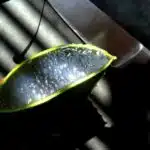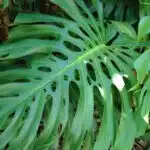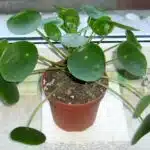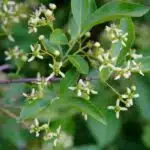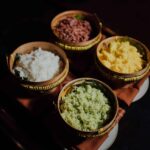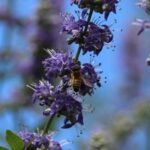Propagating a money tree is a rewarding experience that can yield significant benefits for those looking to add greenery and positive energy to their living spaces. As a plant propagation specialist, I have extensive experience in successfully propagating money trees, also known as Pachira aquatica. These trees are popular among homeowners and office dwellers alike due to their aesthetic appeal and auspicious symbolism.
In this article, I will share my knowledge on how to propagate a money tree, including the ideal environmental conditions, tools required, and step-by-step instructions for successful propagation. Whether you’re looking to expand your collection of indoor plants or gift a propagated money tree to a friend or loved one, this guide will provide you with the necessary information to ensure successful propagation and growth of your new plant.
Understanding The Anatomy Of A Money Tree
Money trees, scientifically known as Pachira aquatica, are popular houseplants that are believed to bring good luck, prosperity, and fortune. In fact, according to Feng Shui principles, a money tree is considered an excellent symbol of wealth and abundance. It is native to the swamps and riverbanks of Central and South America but can be grown indoors in a container as well.
Understanding Money Tree Anatomy is crucial to successful propagation. A mature money tree has a thick trunk with several braided stems that support large green leaves. The leaves have five to seven leaflets arranged in a circular pattern. The plant also produces small white or yellow flowers that eventually turn into edible nuts resembling chestnuts. Interestingly enough, these nuts are believed to bring good luck and enhance fertility.
Identifying Propagation Opportunities for money trees can be done using cuttings or air layering techniques. Cuttings should be taken from healthy branches with at least two nodes—where the leaves attach to the stem—using clean pruning shears. Air layering involves wounding a section of bark on the stem and wrapping it with moist sphagnum moss until roots form. Both methods require high humidity and warm temperatures for optimal growth. With proper care and attention, propagating money trees can yield healthy new plants that will bring joy and prosperity for years to come.
Moving on to the Benefits of Propagating a Money Tree, let’s take a closer look at how this process can lead to more opportunities for success and fulfillment in our lives.
Benefits Of Propagating A Money Tree
Understanding the anatomy of a money tree is essential before attempting propagation. Once you have mastered this, propagating your money tree can be an exciting and rewarding experience. The benefits of propagating a money tree are numerous, including expanding your collection of plants, giving them as gifts to friends and family, or even selling them for profit.
One tip to successfully propagate your money tree is to start by selecting healthy mother plants. Look for plants with no signs of disease or insect infestation. It’s also crucial to choose a plant with a sturdy stem, as it will be easier to propagate. You can use pruning shears to take cuttings from the stem, ensuring that each cutting has at least two nodes.
Another trick is to use rooting hormone powder when planting your cuttings in soil or water. This will encourage root growth and increase the chances of success in propagating new money trees. When planting in soil, make sure it has good drainage and keep the soil moist but not too wet as excess moisture can lead to root rot.
Preparing your propagation materials is the next step in successfully propagating your money tree. Whether you choose water or soil propagation methods, ensure that you have all necessary materials ready before starting. For water propagation, prepare a container filled with distilled water and rooting hormone powder in advance. For soil propagation, prepare pots filled with well-draining soil mixtures and rooting hormone powder. With these tips and tricks in mind, you’ll be on your way to successfully propagating new money trees!
Preparing Your Propagation Materials
As you begin propagating your money tree, you will need to gather the necessary materials. The first item on your list is a sharp pair of pruning shears or a clean knife. These tools will be used to take cuttings from the parent plant. You will also need a container for rooting your cuttings in water or soil, depending on which method you choose.
Once you have gathered your materials, it’s time to prepare your cuttings. Select a healthy stem from the parent plant that has at least three leaves attached. Make sure that the stem is not too woody and that it has some flexibility. Using your pruning shears or knife, make a clean cut just below a node, which is where leaves emerge from the stem.
After taking your cutting, remove any leaves that are within two inches of the bottom of the stem. This will help prevent rotting and allow roots to form more easily. If using the water propagation method, fill a container with room temperature water and place your cutting in it so that only the bottom inch or so is submerged. If using soil propagation, moisten potting mix and stick the cutting into it up to the first set of leaves.
- Sharp pruning shears or knife
- A container for rooting
- A healthy stem with at least three leaves attached
- Room temperature water (if using water propagation)
- Moistened potting mix (if using soil propagation)
With these materials and preparation steps completed, you are now ready to begin propagating your money tree by choosing the right propagation method for you.
Choosing The Right Propagation Method
After preparing your propagation materials, it’s time to choose the right propagation method for your money tree. The two most common methods are water and soil propagation. Water propagation involves placing the cuttings in a container of water until roots form, while soil propagation involves planting the cuttings directly into soil. Both methods have their advantages and disadvantages, so it’s important to consider what works best for you.
Water propagation is a popular choice because it allows you to easily monitor root growth and adjust the water level as needed. It also prevents over-saturation of the cuttings, which can be an issue with soil propagation. However, once the roots have formed, transplanting into soil can be a delicate process that requires careful attention. Soil propagation is more straightforward but requires more patience as it can take longer for roots to form.
If you’re propagating multiple money trees at once, it’s important to keep track of each cutting and its progress so that you can adjust your care accordingly. One way to do this is by labeling each cutting with a tag or marker that includes the date it was propagated and which method was used. This will help you keep track of when each cutting needs to be transplanted or moved to a different location.
Next up: a water propagation guide that will take you through the steps necessary to propagate your money tree successfully without any hassle!
Water Propagation Step-By-Step Guide
- Money trees (Pachira aquatica) can be propagated from seed. In order to do so, the seeds must first be collected from the mature fruit of the tree.
- Once the seeds are collected, they should be soaked in water for 24-48 hours to allow for the seed coat to soften and for germination to begin.
- After the seeds have been soaked, they should be sown into a soil mix that is well-draining and contains organic matter.
- The seeds should be lightly covered and maintained in a warm, humid environment until they germinate and the first true leaves appear.
Collecting Seeds
Seed germination is an essential process in propagating a money tree. Collecting seeds from the plant can be done through various harvesting techniques, but it is vital to ensure that the seeds are mature enough before harvesting them. A mature seed has a brownish color and falls off easily when touched. It is important to note that immature seeds may not germinate or grow well.
Once you have collected the mature seeds, you need to prepare them for germination. Start by cleaning them using a fine mesh strainer or a sieve to remove any debris or dried plant material. Afterward, soak the seeds in water for 24 hours to help soften their outer coat and improve their chances of sprouting.
To promote successful seed germination, plant the soaked seeds immediately after soaking them in moist potting soil. Keep the soil moist throughout the germination process and place it in a warm location with indirect sunlight. With time, you should start seeing small green shoots emerging from the soil, indicating that your money tree has successfully propagated itself from seed.
Soaking Seeds
Seed selection is a crucial step in propagating plants, and this applies to water propagation as well. Choosing the right seeds can make a significant difference in the success rate of your propagation project. When selecting seeds for water propagation, it is best to choose mature seeds with intact outer coats. Immature or damaged seeds may not germinate or grow well, reducing your chances of success.
Once you have selected the right seeds for water propagation, you need to prepare them before planting. Soaking the seeds is one of the most effective ways to improve their chances of germination. Soaking helps soften the outer coat of the seed and allows water and nutrients to penetrate more easily. To soak your seeds, place them in a container filled with room temperature water for 24 hours before planting.
After soaking your seeds, it’s time to plant them in your chosen medium for water propagation. You can use anything from pure water to a mixture of soil and sand or vermiculite and perlite. The key is to ensure that your medium provides adequate support for your plant’s roots while allowing air and moisture to circulate freely. Once planted, keep your container in a warm location with indirect sunlight and change the water regularly to prevent bacterial growth. With patience and care, you should soon see roots emerging from your seed, indicating successful germination through water propagation.
Soil Propagation Step-By-Step Guide
Soil preparation is key to a successful money tree propagation. The soil mix should be well-draining and nutrient-rich. A mixture of peat moss, perlite, and sand is ideal for this process. It is best to sterilize the soil before use to eliminate any potential pathogens that could harm the plant.
Moisture management is also crucial in propagating a money tree. The soil should be kept consistently moist but not waterlogged. Overwatering can lead to root rot, which can kill the plant. Conversely, allowing the soil to dry out completely can also harm the plant’s growth.
To propagate a money tree using soil, follow these steps:
- Fill a small container with your prepared soil mix.
- Take a healthy stem cutting from an existing money tree.
- Remove any leaves from the bottom 2 inches of the stem.
- Dip the cut end of the stem into rooting hormone powder.
- Insert the stem into the soil about 2 inches deep.
- Water thoroughly and cover with plastic or a clear plastic bag to create humidity around the cutting.
- Place in bright, indirect light and keep moist until new growth appears.
By following these steps for soil propagation of your money tree, you can ensure successful growth of your new plant and enjoy its beauty for years to come. In caring for your propagated money tree, it is essential to monitor moisture levels and provide it with proper nutrients as it continues to grow and mature.
Caring For Your Propagated Money Tree
Caring for your propagated money tree is crucial to ensure its healthy growth and development. One of the essential aspects of caring for your money tree is pruning. Pruning helps maintain the plant’s shape, remove dead or damaged foliage, and prevent overgrowth. When propagating a money tree, it’s best to allow it to grow undisturbed for at least six months before pruning. After that, you can prune regularly as needed.
Environmental factors also play a significant role in caring for your propagated money tree. Money trees prefer bright, indirect light and thrive in temperatures between 65-75°F (18-24°C). They also require high humidity levels, so consider placing a humidifier nearby or misting the leaves with water occasionally. Additionally, make sure to keep the soil consistently moist but not waterlogged.
Overall, proper care is essential in ensuring your propagated money tree’s success. By following these tips on pruning and environmental factors, you can help your plant thrive. In the next section, we will discuss choosing the right pot for your money tree to further support its growth and development.
Choosing The Right Pot For Your Money Tree
After successfully propagating your money tree, it is now time to choose the right pot for it. Choosing the right pot is crucial because it affects the growth of your money tree. One of the first things to consider is the size of the pot. The size should be proportional to the size of your plant, and there should be enough room for its roots to grow.
Aside from size, you should also consider the material of the pot. Terra cotta and ceramic pots are popular choices because they allow air and moisture to pass through them easily. However, plastic pots are also a viable option because they retain moisture better than terra cotta or ceramic pots. When choosing a pot material, take into account your watering habits and how well-draining your soil mix is.
Another important factor when choosing a pot for your money tree is drainage and aeration. Your pot should have drainage holes at the bottom to prevent water from accumulating at the roots which can lead to root rot. Additionally, make sure that your soil mix has proper drainage properties and includes perlite or vermiculite as these materials improve soil aeration.
To avoid any mishaps when potting your money tree, there are some common mistakes that you should avoid. One mistake is using a pot that’s too big for your plant – this can lead to over-watering and root rot. Another mistake is not having enough drainage holes in your pot which can cause waterlogging issues. Lastly, using poor-quality soil mix can affect overall plant health by not providing adequate nutrients or oxygen.
In summary, choosing the right pot size and material while considering proper drainage and aeration are critical factors in ensuring healthy growth for your propagated money tree. Avoiding common mistakes such as over-potting or inadequate drainage holes will ensure optimal conditions for growth. In our next section, we will discuss ideal environmental conditions for your money tree’s continued success!
Ideal Environmental Conditions For Your Money Tree
It is important to note that the environmental conditions for a money tree can vary depending on whether it is being grown indoors or outdoors. Indoor money trees typically require bright, indirect light and temperatures between 60-75°F. On the other hand, outdoor money trees prefer partial shade and temperatures between 65-85°F. It is essential to monitor temperature levels because extreme fluctuations can cause damage to the plant.
Another vital aspect of creating ideal environmental conditions for your money tree is ensuring proper soil pH. Money trees thrive in slightly acidic soils with a pH range of 6.0-7.5. Good drainage is also crucial as overwatering can lead to root rot and other issues. The addition of organic matter such as peat moss or compost can help improve soil quality and provide necessary nutrients for the plant’s growth.
Humidity levels should also be taken into account when trying to create an optimal environment for your propagated money tree. Money trees prefer moderate humidity levels around 50-60%. If indoor humidity levels are lower than preferred, using a humidifier or placing a tray of water near the plant can help increase moisture in the air.
| Lighting | Temperature | Soil pH | Humidity | Watering Frequency |
|---|---|---|---|---|
| Bright Indirect Light (Indoor) Partial Shade (Outdoor) | 60-75°F (Indoor) 65-85°F (Outdoor) | 6.0-7.5 | 50-60% | Water when top inch of soil feels dry |
As you work towards creating optimal environmental conditions for your propagated money tree, it is important to remember that watering frequency will depend on various factors such as temperature, humidity, and soil type. Monitoring these factors closely will help you determine how often you should water your plant to prevent over or under watering issues that may arise. In the next section, we will delve into common problems that may occur during propagation and provide solutions to help you maintain a healthy and thriving money tree.
Common Problems And Solutions For Propagated Money Trees
Watering money trees should be done in moderation, as too much water can lead to root rot. Lighting is important for money trees, and they need at least 4-6 hours of direct sunlight per day. Temperature requirements for money trees are between 65-80°F, and they should not be exposed to sudden temperature changes. Pruning is essential for money trees to maintain a healthy shape and size, and should be done in the spring or early summer.
Watering
To ensure the proper growth of a propagated money tree, it is essential to understand the significance of watering frequency. Overwatering is one of the most common mistakes made by plant enthusiasts, which can lead to root rot and even death of the plant. It is important to check the soil moisture level before watering and avoid doing so if moistness persists.
Watering frequency varies depending on environmental factors such as temperature, humidity, and light intensity. Typically, a propagated money tree requires watering once a week during summers and every two weeks in winters. One must note that it is better to underwater than overwater since the latter can cause damage. A general rule of thumb for watering is to let the topsoil dry out before giving water.
Signs of overwatering include yellowing leaves, mushy stems, and an unpleasant odor emanating from the soil. If any of these symptoms are detected, it is crucial to reduce or stop watering immediately and allow the soil to dry out completely before checking for further action. Additionally, repotting in fresh soil can help remove excess moisture from the roots. Understanding these signs allows timely intervention and helps prevent significant harm to your money tree.
In conclusion, maintaining optimal watering practices is critical for healthy growth when propagating a money tree. Watering frequency should be adjusted according to seasonal changes, while avoiding overwatering at all costs. Consistently monitoring your plant’s condition will allow quick recognition of potential problems like overwatering and ensure long-term prosperity for your propagated money tree.
Lighting
Proper lighting is another essential factor for the healthy growth of a propagated money tree. Indoor vs outdoor lighting can have significant impacts on the plant’s overall health. Money trees prefer bright, indirect light but can tolerate low light conditions. However, if placed in direct sunlight, the leaves may scorch and turn brown. Therefore, it is important to find a balance between too much and too little light.
For indoor lighting options, placing the propagated money tree near a north or east-facing window that receives indirect sunlight is ideal. If such a location is not available, artificial lighting options like fluorescent or LED grow lights can be used. These lights should be placed 6-12 inches away from the plant and kept on for 12-14 hours each day to mimic natural daylight conditions.
In contrast, outdoor propagated money trees need to be protected from harsh sunlight during hot summer months by placing them under partial shade. During winters, they can receive direct sunlight without any issues. Regular monitoring of your propagated money tree’s reaction to its environment and adjusting its position accordingly will help ensure optimal growth and health.
Pruning And Shaping Your Money Tree
Pruning techniques are essential to the growth and development of your money tree. The objective of pruning is to maintain the desired shape of the plant while controlling its size. Prune back any unwanted branches or leaves, especially those that are diseased or damaged. It is also important to remove any suckers that may appear at the base of the plant or along the trunk. Pruning should be done during the dormant season, preferably before spring.
Training techniques can help shape your money tree into a desirable form. One effective method is to use wires or stakes to guide the growth direction of your plant. This will encourage it to grow in a specific direction, allowing you to create a desired shape for your plant. Another technique is called pinching, where you remove new growth from a branch using your fingers or pruning shears. This will encourage lateral branching and produce a fuller, more compact plant.
In summary, by employing pruning and training techniques, you can keep your money tree healthy and looking great year-round! Proper pruning will allow for better air circulation within the plant while also reducing pest problems. Training techniques will enable you to mold your money tree into whatever shape you desire, whether it’s a bushy shrub or tall tree-like form. In our next section, we’ll discuss how to transplant your propagated money tree so that it can continue growing in its new home!
Transplanting Your Propagated Money Tree
After propagating your money tree, it is essential to transplant it properly to ensure its growth and survival. Transplanting tips include selecting a suitable pot that is slightly larger than the root ball of your propagated plant. The pot should have drainage holes to prevent waterlogging, as well as a layer of stones or gravel at the bottom for better drainage. Fill the pot with a well-draining soil mixture that is rich in nutrients.
Before transplanting your propagated money tree, observe its root growth patterns. If the roots have grown too long and tangled, you may need to prune them back to encourage new growth and prevent damage during transplantation. Gently remove the plant from its original container and loosen any compacted soil around the roots. Place the plant in its new container, ensuring that it is centered and level with the surface of the soil.
Once you have transplanted your propagated money tree, water it thoroughly until excess water drains out through the drainage holes. Place the plant in a location that receives bright but indirect sunlight, avoiding direct exposure to harsh sunlight or cold drafts. Monitor your newly transplanted plant regularly for signs of stress or disease and adjust its care accordingly. In the next section, we will discuss how to propagate money trees from cuttings, providing another method for expanding your collection of these unique plants.
Propagating Money Trees From Cuttings
With the proper techniques, propagating a Money Tree from cuttings is relatively easy. Before you begin, ensure that your cutting has at least one or two nodes and several leaves. The best time to take a cutting is in the spring or summer when the plant is actively growing.
To propagate your Money Tree from cuttings, start by filling a pot with well-draining soil and water it thoroughly. Make a clean cut on the stem of your cutting just below the node and remove any leaves from the bottom half of the stem. Dip the end of your cutting in rooting hormone powder and place it into the soil, ensuring that at least one node is buried under the soil surface. Keep your newly planted cutting in bright, indirect light and mist it regularly to increase humidity levels.
One common mistake that many people make when propagating Money Trees from cuttings is overwatering their plants. Overwatering can cause root rot, which can kill your plant before it even has a chance to root properly. A solution to this problem is to use a well-draining soil mix and water only when the top inch of soil feels dry to the touch. Another tip for successful propagation is to keep your plant warm – around 70-75°F (21-24°C) – as this will encourage root growth and help prevent any fungal diseases from taking hold.
Transitioning into propagating Money Trees from seeds, there are some important things to keep in mind when starting from scratch. Unlike cuttings, seeds need specific conditions to germinate successfully – namely warmth, moisture, and light. A helpful trick for starting Money Tree seeds is to soak them overnight before planting them in well-draining soil mix. Place them in a warm spot with good light exposure – like near a window or under grow lights – and keep them consistently moist until they germinate in 2-4 weeks’ time.
Propagating Money Trees From Seeds
- Money tree seeds can be found in nurseries and through online retailers.
- Before planting the seeds, they should be soaked in warm water for 24 hours to assist with germination.
- Money tree seeds should be planted in soil that is well-draining and lightly moist.
- After planting, the seeds should be kept in an area with indirect sunlight, and the soil should be kept moist until germination occurs.
Finding Seeds
Finding sources of money tree seeds is an essential step to propagate this beautiful plant. Seeds can be obtained from local nurseries or online retailers specializing in exotic plants. One must ensure that the source provides high-quality, viable seeds suitable for germination. It is also crucial to purchase seeds from a reputable seller to avoid any potential fraud or incorrect labeling.
Once you have acquired your money tree seeds, it’s time to start with the germinating process. There are many techniques for germinating money tree seeds, including soil propagation, water propagation, and air layering. The most common method is soil propagation, where the seed is sown into a potting mix made of peat moss and perlite. Water propagation involves soaking the seed in water until roots emerge, while air layering involves cutting off a stem and allowing it to develop roots before planting.
It’s important to note that money trees are slow-growing plants that require patience and care during the propagation process. It can take several weeks for the seed to germinate, so maintaining consistent moisture levels and providing adequate sunlight is crucial. Once your new money tree has established itself, it will reward you with its unique braided trunk and vibrant green leaves – a testament to your successful propagation efforts!
Planting Seeds
After obtaining high-quality and viable money tree seeds, the next step in propagating this beautiful plant is planting them. Planting seeds is a crucial process that will set the foundation for the germination of your money tree seeds. Germinating money tree seeds requires careful attention and monitoring to ensure successful growth. The germination process involves providing optimal conditions such as consistent moisture levels and adequate sunlight.
To start planting money tree seeds, you will need a potting mix made of peat moss and perlite. Fill your container with the potting mix, leaving some space at the top for watering. Using your finger or a pencil, create a hole in the center of the soil about 1 inch deep. Place one seed in each hole and cover it with soil. Water your newly planted seeds gently to avoid disturbing them.
After planting the money tree seeds, provide consistent care by maintaining moisture levels in the soil. Avoid overwatering, as this can lead to seed rot or fungal diseases. Keep an eye on your seedlings for any signs of stress or disease, such as wilting or discoloration of leaves. Ensure adequate sunlight exposure by placing your container near a window with ample sunlight or using grow lights if necessary.
Growing money trees from seeds can be a rewarding experience that requires patience and care throughout the germination process and seedling care. By following these simple steps for planting your money tree seeds, you can establish healthy plants that will thrive for years to come!
Troubleshooting Tips For Successful Propagation
After successfully propagating a money tree from seeds, it’s time to move on to other propagation methods. One of the most common ways to propagate a money tree is through stem cuttings. This method involves cutting a healthy and mature stem from the parent plant and allowing it to root in soil or water. It’s important to choose a stem that has at least three nodes and is free from any diseases or pests.
To propagate through stem cuttings, follow these steps:
- Using a clean and sharp pair of scissors or pruning shears, make a diagonal cut just below the third node of the selected stem.
- Remove any leaves from the bottom half of the stem.
- Dip the cut end into rooting hormone powder or gel.
- Plant the cutting in well-draining soil or place it in water until roots develop.
One common mistake when propagating money trees through stem cuttings is not providing enough humidity during the rooting process. To prevent mold growth, cover the cutting with a plastic bag or dome until roots are established. Additionally, root rot can occur if the cutting is overwatered or placed in poorly draining soil.
In summary, propagating a money tree through stem cuttings can be an effective way to grow new plants. To ensure successful propagation, properly identify any issues such as root rot and take preventative measures like providing adequate humidity and drainage for your cuttings during this crucial stage of growth. By following these troubleshooting techniques, you’ll be able to enjoy a thriving collection of money trees in no time!
Conclusion
Money trees are a popular indoor plant that not only adds aesthetic value to your home, but also symbolizes good luck and prosperity. Propagating a money tree is an easy and cost-effective way to expand your collection or share it with friends and family. Understanding the anatomy of a money tree is essential before attempting propagation. The benefits of propagating include increasing the number of plants, saving money, and preserving genetic diversity.
To propagate a money tree successfully, you need to prepare your propagation materials such as pruning shears, rooting hormone, pots, soil mixtures, and water. Choosing the right propagation method depends on the type of material you have available. Water propagation method is easy and effective for stem cuttings while seed propagation requires more patience and time. Transplanting your propagated money tree is crucial for their survival as they need proper care to establish new roots.
Propagating money trees from cuttings or seeds can be rewarding if done correctly. However, there are common mistakes that can hinder successful propagation such as overwatering, using contaminated soil mixtures, or poor lighting conditions. Troubleshooting tips for successful propagation include adjusting watering schedules, choosing healthy parent plants, maintaining optimal temperature and humidity levels.
In conclusion, propagating a money tree is an excellent opportunity for plant enthusiasts to expand their collection or share their love of plants with others. As horticulturalists or plant propagation specialists know well: understanding the anatomy of the plant is key when attempting to propagate successfully; proper preparation ensures success in rooting; choosing the right method requires careful consideration; transplanting requires tender care; troubleshooting helps prevent potential issues from sabotaging any attempts at growth. So go ahead – propagate your own money tree today!
Image Credits
- “money tree” by alex012 (featured)






